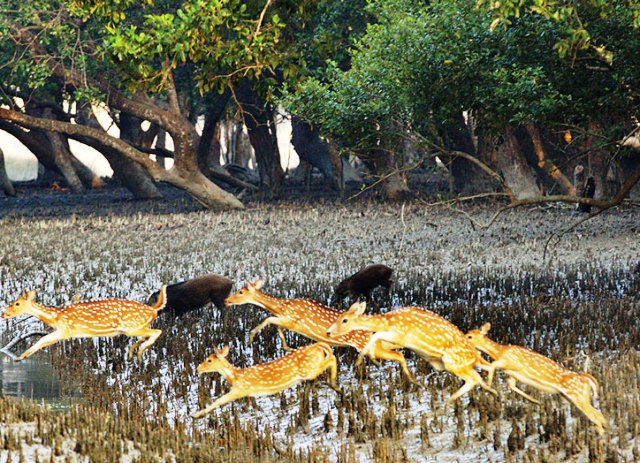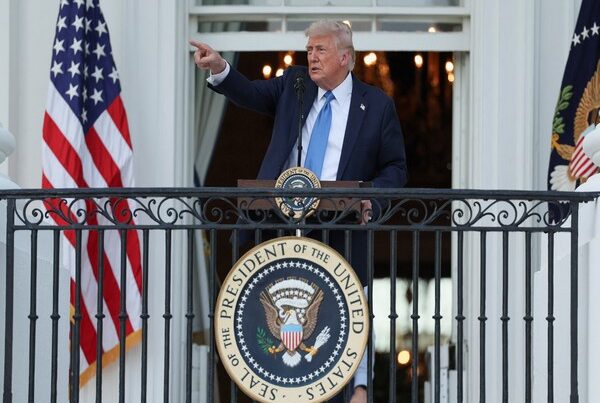
Sundarbans: Dark Clouds & A Silver Lining
Sundarbans in West Bengal and Bangladesh is surely famous for its majestic Royal Bengal Tiger, an endangered species. Ecologically a global hot spot and a UNESCO heritage zone, both its ecology and its human habitation are now in serious danger and on the verge of a precipice after the fierce Cyclone Amphan hit it recently washing away thousands of homes, destroying livelihood, agriculture, fisheries and the vast mangroves, turning fresh water rivers into salt lakes or saline water bodies.
Sundarbans is the only wildlife zone in India which also allows man-eaters to roam free and they are not shot or imprisoned in cages of a zoo. It is also legendary for its huge delta and mangrove forests, an abundance of wildlife, crocodiles, birds, river and sea fish, insects and flora and fauna, and a kaleidoscope of bio-diversity including perhaps the finest honey found in South Asia.
The reserve is inhabited by around 4 million people, many of them refugees from the mainland or from across the border, who have migrated in different phases before and after the Partition. These millions who live in the buffer zone with great danger of both animals and natural catastrophes, surrounded by wetlands, water bodies, fresh water and saline water rivers, and the sea nearby, are situated perhaps in one of the most dangerous, fragile, sensitive and shifting demographic zone of land, river and forests.
The difficult and impossible terrain in the core area is not easy to access, hence, it is still not clear as to what has happened to the majestic tiger population or marine life in the region.
Indeed, a cyclone or storm at high speed which ravages homes and the habitat begins to form naturally as a routine in the Bay of Bengal, as and when the high surface temperature leads to a cyclonic turbulence. Before Cyclone Amphan, Cyclone Aila had also wrecked massive destruction in the Sundarbans, destroying mangroves, fisheries, agricultural fields, fishermen’s boats and homes, and water bodies.
ALSO READ: ‘If Corona Wasn’t Enough, Cyclone Joined Party’
As after Cyclone Amphan, it is also Sundarbans which blocks or absorbs the ferocity of the storm and helps maintain some kind of ecological balance, thereby stopping the storm’s speed to hit the mainland and the plains with the same ferocity, though the cyclone did damage and destroy Kolkata’s basic infrastructure, like telephone and electricity lines in the first instance, flooding the entire city. It goes to the credit of the West Bengal government that they were quick to restore a semblance of normalcy, especially electricity lines in large parts of the ‘Mahanagar’ soon after the cyclone.
Over the decades, Sundarbans has faced invasion of human population due to acute poverty, homelessness, conflicts and violence, and economic migration from across West and East Bengal. The population pressure has not been allowed to reach the core areas, but a huge area of the buffer zone is literally spilling over into the core areas in both India and Bangladesh. Plus the ravages of construction activity, real estate and tourist sharks, and industry, especially in Bangladesh.
For instance, under construction in recent times has been a coal-fired power station at Rampal in the Bagerhat sub-division of Khulna. This might decisively alter for years to come the delicate ecological balance of this precious heritage site, according to environmentalists in Bangladesh. A joint venture between India’s National Thermal Power Corporation (NTPC) and Bangladesh Power Development Board (BPDP), the venture has been announced as the Bangladesh India Friendship Power Company, signaling a sign of friendship between the two neighbouring countries.
The coal-based venture is slated to generate 1,320MW of power, stretched across over 1,834 acres of this pristine zone, and is just about 14 km north of the world’s largest mangrove forest, Sundarbans, near the sublime saline estuary Poshur. This reporter ventured near the project in the summer of 2018 where journalists are not allowed to enter, and no peaceful protests are allowed, not even writing on the wall.
According to experts, Bangladesh has gas and power, it lacks coal. And India wants to dump its huge quantity of coal through this river project, thereby threatening the vulnerable ecological dynamics of this sensitive organic natural landscape. If the project starts operating, and by all indication it will, birds, marine life and wildlife will certainly move to a different terrain, including crocodiles and the tiger, the water quality will change including its temperature, the daily tidal waves will be impacted, and the thousands of sq km of the deeper core of the mangrove forests will not be the same anymore.
Besides, where will they dump the huge amount of fly-ash, waste products, garbage, industrial waste, etc? Into the waters and the estuaries?
In the Indian side there is a serious effort to preserve its ecology, due to civil society consciousness. There is still a debate ranging on the coal-based plant in Bangladesh, including among its intelligentsia and students in prestigious universities like in Khulna and Dhaka. Almost all the Left parties told this reporter in Khulna that they are just not allowed to peacefully protest.
ALSO READ: ‘Corona Unsettled Us, Cyclone Made It Worse’
However, amidst the destruction, the human will to survive and reach out, preserved its sanctity. The civil society collectives in Bengal, especially the voluntary sector and students, pulled in all their efforts for immediate relief in the Sundarbans and 24 Parganas. The Bengal Relieve Collective, along with Prameya and Elsa, and other groups moved in almost on day one, taking the help of fishermen and boat people to provide relief in the remote and marooned villages surrounded by water.
In the second phase of their relief now, they are primarily focusing on mangrove reconstruction and conservation, ecological preservation, community and women’s health and education in the second phase of the relief operations. In the first phase was home reconstruction, food, tarpaulins, torches, medicine and drinking water etc. They have apparently reached almost 2500 families, that is, around 10,000 people in 15 areas, contributing relief material worth Rs 15 lakh.
The Bangla Sanskriti Mancha, based in Kolkata and in remote districts, comprising youngsters, students and others, too moved in decisively. They entered not only Sundarbans but also nearby areas of 24 Parganas; currently they are helping out in Birbhum, among other places, posting their daily activities in the social media in Bangla.
Recently they held a rock concert called ‘Bottle Rockets India lighting up lives in Sundarbans’ in which filmmaker Anurag Kashyap helped wholeheartedly. In a post they said: “Thank you Anurag Kashyap for your love and support to Bangla Sanskriti Manch.”
In this online concert called ‘Assam sings for Bengal’, in trying to also bind each other with friendly ties considering even Assam suffers devastating annual floods due to the ferocity of river Brahmaputra, their poster said, seeking donations: “We are hosting via MovieSaints a fundraiser eConcert . The group is quirkily called We Care… It is for Amphan relief in the Sundarbans. Do join in if you can please! And share ahead! Music with a heart and a purpose! Join the Assam Heartthrob band Bottle Rockets India tonight, #July1, 8pm IST as they perform for #Lighting Up Lives in the Sundarbans! Heartthrob #Sumon aka Arghadeep Barua is their vocals!
Besides, the National Hawker Federation and the Hawker Sangram Samiti went on boats to remote areas in the Sundarbans to distribute food packets. They, like the Jadavpur Commune comprising students, researchers and former students of Jadavpur University in Kolkata, who run a community kitchen in the campus, reached out with food and other essentials in Sundarbans. They also have been active since the pandemic and the lockdown, distributing food and sanitisers across the city, especially to vendors, slum dwellers, homeless people and cops, among others.
What has indeed been a silver lining amidst the despair is that after the initial hiccups when the local administration and the political apparatus of the ruling regime in Bengal did not come up to the expectations, Mamata Banerjee’s government has quickly moved in with free ration across the hinterland of the Sundarbans. This has been a big relief for the 4 million people in this difficult and fragile landscape. Indeed, the West Bengal government has promised free food to the poor till June 2021.



